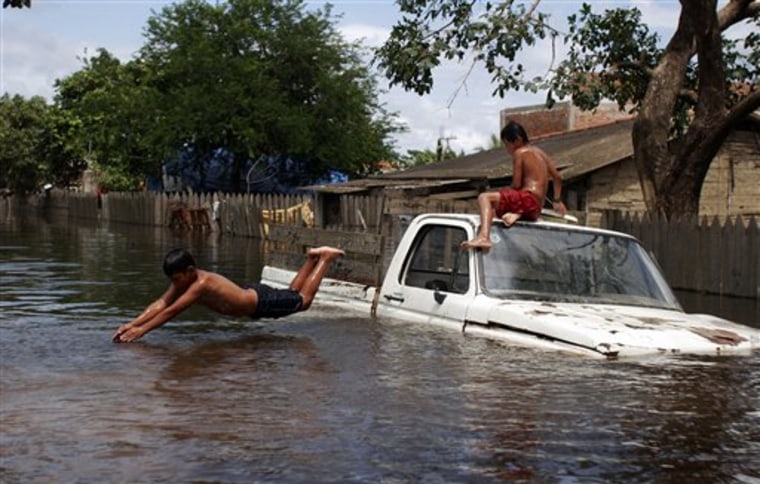The La Niña weather phenomenon blamed for tornadoes in the United States and flooding in Africa has strengthened and could last until midyear or longer, the U.N. weather agency said Monday.
The weather changes resulting from the cooling of sea temperatures in the Pacific Ocean have been noted in the Americas, Africa and Asia, the World Meteorological Organization said.
WMO said the phenomenon "has important effects on the global weather, particularly rainfall." It said it typically was associated with increases in the frequency of heavy rain in the surrounding area.
It stopped short of specific forecasts for the Pacific area or the rest of the world, but in the past La Niña has been associated with droughts, floods and violent storms in different parts of the world.
The shift in the jet stream caused by La Niña has been linked in the United States to Feb. 5 tornadoes that killed at least 50 people. Southern African flooding this year has likewise been tied to torrential downpours that appear to have been caused by the phenomenon. Last year WMO experts said dry conditions in many parts of Australia were a result of La Niña.
WMO had predicted last October that the phenomenon would last until March.
But it said Monday that it now appeared likely that it would persist until June or July and could last longer. It said it was still difficult at this stage to predict how long.
"During the last three months La Niña conditions have become slightly stronger," a WMO statement said. "Sea surface temperatures are now about 1.5 to 2 degrees Celsius (2.7-3.6 Fahrenheit) colder than average over large parts of the central an eastern Equatorial Pacific."
This La Niña had been in the average range of such events, but the recent cooling will likely put it in the stronger-than-average category, WMO said.
La Niña normally lasts nine to 12 months. The current event started in the July-September quarter of last year, WMO said.
"It is rare for a La Niña event to persist for two years or more, such as occurred from early 1998 to early 2000," WMO said. "The likelihood of the current La Niña continuing for such a period will remain unclear for some months."
La Niña is the flip side of the El Niño phenomenon, where Pacific surface temperatures rise and are blamed for other changes in weather patterns around the world.
